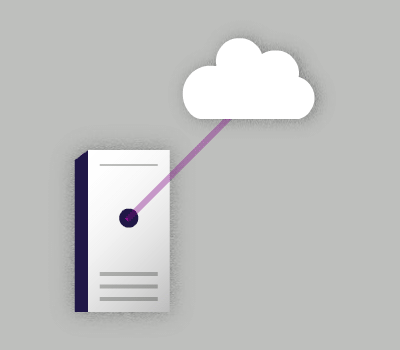NGA now conducts overhead vigilance from the cloud
The National Geospatial-Intelligence Agency (NGA) specializes in geospatial-intelligence (GEOINT) data captured by satellites, drones, and other aircraft deployed around the globe. Its stated mission is to “know the earth, show the way, and understand the world.” The agency is at its best when it enhances situational awareness to help policymakers, military commanders, and first responders understand what is happening on the ground and predict what will happen next.
In September of 2016, NGA Director Robert Cardillo testified before the Senate Select Committee on Intelligence. In his statement, Cardillo spoke of NGA’s new and widely publicized open information technology (IT) strategy designed to streamline data sharing not only within NGA, but also across the entire U.S. intelligence apparatus. In the grand scheme of the intelligence community, Cardillo views NGA’s value proposition less in terms of analyzing specific images, and more about identifying patterns across a wide range of assets to infer significance and motive. He often speaks of the bigger picture—large geopolitical arcs that are easily overlooked with a narrow view of the world depicted in a single image. He sees enormous value in leveraging open IT framework in which data is shared and consolidated to piece together complete narratives, a mission he describes as “creating coherence out of chaos.”
To help advance these outcomes, NGA selected Leidos for a program called “eXploit” (the contract was originally awarded to Lockheed Martin’s Information Systems & Global Solutions business, which merged with Leidos in 2016). The eXploit program is designed to retire legacy systems by moving analyst workflow to the cloud, and onto web applications to streamline imagery analysis and exploitation for a large, widely dispersed user base. These legacy systems are fraught with barriers to accessing important data. The transition to a cloud-based, open architecture improves analysts’ access and collaboration on critical intelligence questions, providing a more thorough picture for decision makers. Once the user base is fully transitioned, analysts will no longer need specialized computers to do their jobs.
The eXploit solution will also provide one aspect of a greater NGA structure observation management (SOM) capability, designed to enable observation collection, dissemination and recall. According to Keith Johnson, Chief Technology Officer, Leidos Defense & Intelligence, “when an analyst looks at an image, it’s important he or she can see relevant annotations made by other analysts. eXploit leverages SOM to bring disparate annotations into a single view. In short, it’s a user interface to enable complex observations. The power of this capability is not just in sharing and collecting alone, but in the ability to build a cohesive picture using the past to inform the future.”

The power of this capability is not just in sharing and collecting data alone, but in the ability to build a cohesive picture using the past to inform the future.
Keith Johnson
CTO, Defense & Intelligence
Foundational to its success, eXploit is considered one of NGA's flagship agile development projects, and is one of NGA’s steps into capacity-based (or “agile”) development, a relatively new method of managing large and complex IT projects. According to Lee Hall, Program Management Director, Leidos Defense & Intelligence, agile methodology brings unprecedented flexibility and efficiency. “Agile provides the opportunity to win fast or fail fast,” Hall said. “It fosters constant engagement. It gives you the ability to shape, direct and redirect the output of a contract every week or month without a major administrative cost or burden. It’s a huge advantage.”
Agile development is gaining traction in federal circles for large-scale IT projects. But according to Johnson, an agile approach alone doesn’t solve every problem. Success depends on many additional factors, he explained, including domain knowledge, experience and execution. “It’s not like you just embrace agile and everything is great,” he said. “It’s not the buzz word that gets the job done. It’s a methodical approach with a seasoned, experienced company that understands the domain and knows the pitfalls. Leidos has now done several large-scale, fully agile software development projects with the federal government, and we have the processes and experience.”
Key Stats
Transforming Exploitation Tradecraft
First-of-its-kind cloud-based imagery exploitation capability built and delivered on C2S infrastructure:
- Retirement path forward for 5 legacy systems across 3 domains
- 84 initial core imagery exploitation services delivered in 11 months
- Observation management user interface tool taken from concept to operations in 9 months
- Foundation GEOINT modernization operational capability delivered in 6 months

